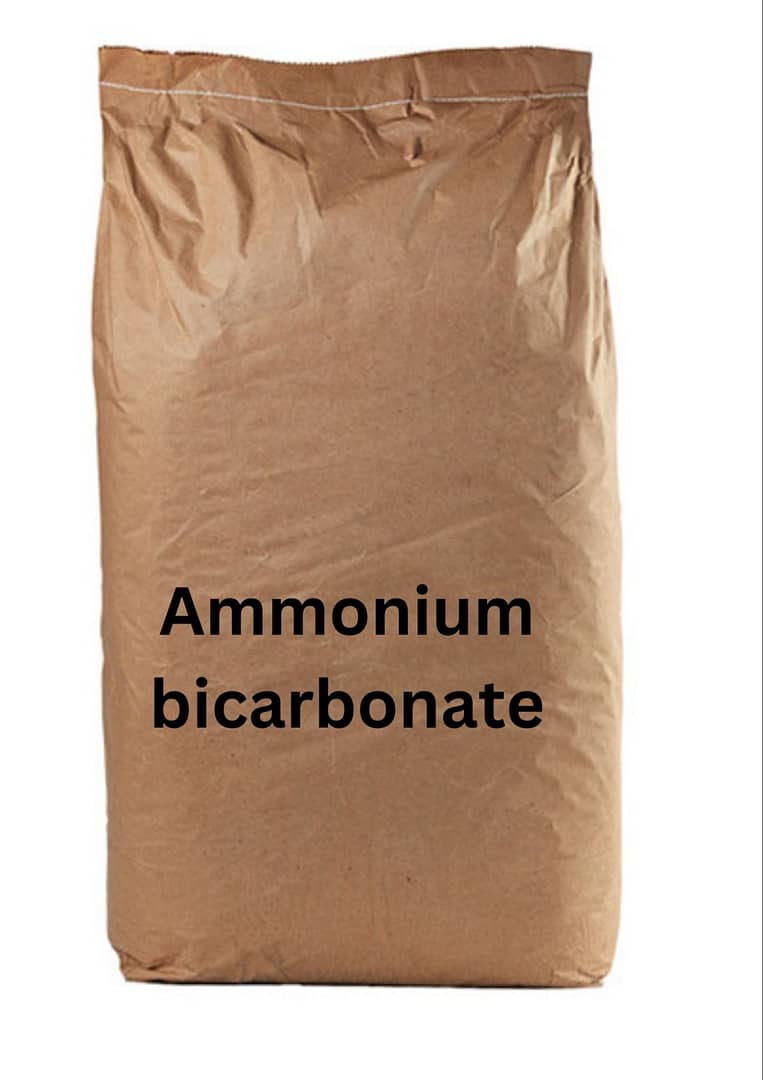Key Points About Ammonium Bicarbonate:
- Leavening Agent: In baking, ammonium bicarbonate is used as a leavening agent, particularly in recipes that require a dry powder. It releases carbon dioxide gas when it decomposes, which helps dough or batter rise. This is particularly useful in recipes like cookies and crackers.
- Decomposition: When heated, ammonium bicarbonate decomposes into ammonia, carbon dioxide, and water. This decomposition happens at relatively low temperatures, which is why it is more suitable for recipes that are baked at higher temperatures or require a dry texture.
- Food Industry Use: In the food industry, it’s often used in combination with other leavening agents to achieve the desired texture and rise. It is known for its ability to produce a lighter, crispier texture in baked goods.
- Safety: Ammonium bicarbonate is considered safe for consumption in the quantities typically used in food preparation. However, excessive consumption can lead to an excess of ammonia in the body, which is why it’s used in controlled amounts.
- Non-Food Uses: Besides baking, ammonium bicarbonate has other applications, including in the production of certain fertilizers, as a buffering agent in pharmaceuticals, and as a fire extinguisher component.
- Alternative Names: It’s sometimes referred to as "baker’s ammonia" or "ammonium carbonate" (though ammonium carbonate is a different compound that can also be used in baking).
Overall, ammonium bicarbonate is valued for its effectiveness in creating a light, airy texture in baked goods and is used in various other industrial and commercial applications.


